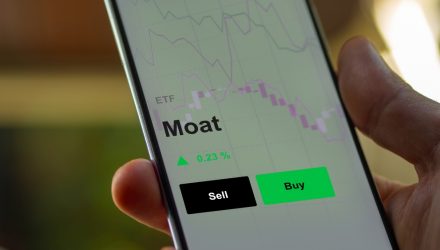Among the bright spots in the early part of 2023 is a rebound of 8.52% by the Nasdaq-100 Index (NDX), which was battered in 2022 as growth stocks slipped. How durable the recovery proves to be remains to be seen, but investors considering exchange traded funds such as the Invesco QQQ Trust (QQQ) and the Invesco NASDAQ 100 ETF (QQQM), both of which track the Nasdaq-100, can take heart in knowing those ETFs are homes to plenty of companies that are considered wide moat firms.
Said another way, QQQ and QQQM are loaded with shares of companies with wide competitive advantages – a trait that can lead to attractive long-term outcomes.
“Economic moats reflect the degree to which a company has durable competitive advantages. A company with an economic moat can fend off competition and earn high returns on capital for many years to come. To determine whether a company has an economic moat, Morningstar analysts look at network effect, switching costs, intangible assets such as patents and brand identity, cost advantage, and efficient scale,” noted Lauren Solberg for Morningstar.
While the Nasdaq-100 historically has been more volatile than other broader equity benchmarks, though it has produced superior returns, wide moat stocks also offer investors the benefit of lower volatility.
“Stocks with economic moats have also tended to have smaller price swings than their no-moat counterparts. As measured by standard deviation — a common barometer for volatility — over the past five, 10, and 15 years, wide-moat stocks have come with lower volatility than narrow-moat stocks and the broader equity market. No-moat stocks have shown the highest volatility as a group,” added Solberg.
Adding to the allure of QQQ and QQQMG today is the point that many wide moat stocks, including multiple members of those ETFs’ rosters, are undervalued. One that fits the undervalued bill is semiconductor equipment name Applied Materials (NASDAQ: AMAT). That stock accounts for 0.81% of the QQQ and QQQM portfolios.
Some of the ETFs’ 2022 offenders, such as Amazon (NASDAQ: AMZN), Facebook parent Meta Platforms (NASDAQ: FB), and Microsoft (NASDAQ: MSFT), are also attractively valued today. And they have quality and wide moat perks.
“A company with an economic moat can fend off competition and earn high returns on capital for many years to come. To determine whether a company has an economic moat, Morningstar analysts look at network effect, switching costs, intangible assets such as patents and brand identity, cost advantage, and efficient scale,” concluded Solberg.
For more news, information, and analysis, visit the ETF Education Channel.
The opinions and forecasts expressed herein are solely those of Tom Lydon, and may not actually come to pass. Information on this site should not be used or construed as an offer to sell, a solicitation of an offer to buy, or a recommendation for any product.








